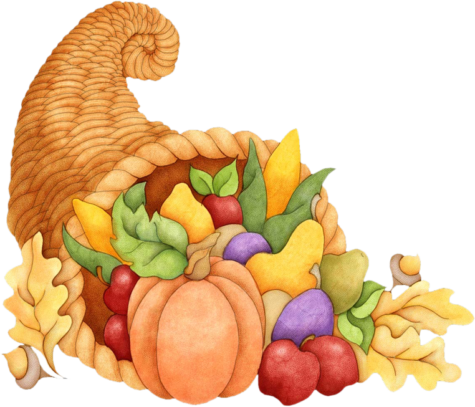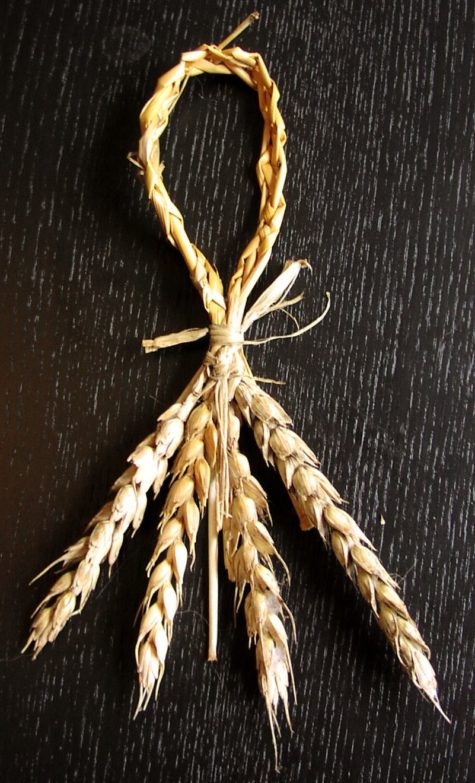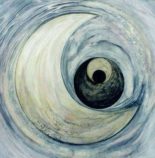Harvest Symbols
Hegal
From the Fifty Names of Marduk in the Necronomicon Spellbook.
The Twenty-Seventh Name is HEGAL.
As with ENBILULUGUGAL, a Master of the arts of farming and agriculture. Bestows rich harvests. Possesses the knowledge of the metals of the earth, and of the plough. His Word is BURDISHU.
An accomplished mystic writes to us to say that another ability of this Spirit is in the realm of sexual reproduction in people as well, and asserts that HEGAL, can reveal secrets concerning human sexuality and fertility, linking HEGAL with the Semitic Spirit HAGIEL, a Spirit of the planet Venus.
Important note:
“The Signs and Powers may be summoned after the Priest has ascended to that step on the Ladder of Lights and gained entrance to that Sacred City. The Signs should be engraved on parchment or sealed in clay and placed upon the altar at the Calling. And in the perfumes should be of cedar, and strong, sweet-smelling resins. And the Calling be to the North.”
More information:
According to Sumerian mythology, Marduk was the God who defeated the Ancient Ones long before the creation of matter as we know it.
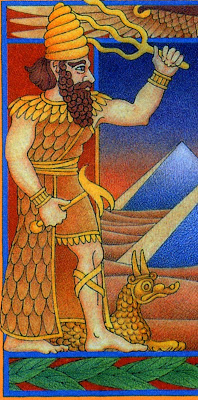 Against him in battle were the fierce TIAMAT, KINGU, and AZAG-THOTH. Once he had destroyed these demons, he created the universe from the flesh of TIAMAT, and humanity from the blood of KINGU mixed with his own breath.
Against him in battle were the fierce TIAMAT, KINGU, and AZAG-THOTH. Once he had destroyed these demons, he created the universe from the flesh of TIAMAT, and humanity from the blood of KINGU mixed with his own breath.
You will come across these names in the description of the Fifty Names, which were titles given to Marduk by the Elder Gods after he had helped them to defeat the Ancient Ones.
Related links:
- Pagan Calendar – Marduk’s Feast Day
- The Powers That Be – Marduk The God
- Widdershins – Marduk Legends and Stories, the original translation of the Enûma Eliš, and the Fifty Names of Marduk as originally given in the ancient tablets.
Cornucopia
Also called the Horn of Plenty, the cornucopia is often depicted in paintings and on friezes where it symbolizes the notion of boundless abundance, as flowers, fruits, sheaves of wheat, and other produce spill out of a hollow horn or a twisting basket woven in the shape of the horn.
The origin of the cornucopia is found in the Greek myth of Amalthea. Amalthea fed the infant Zeus a drink of goat’s milk and was given the brimming goat’s horn as a reward. Sometimes the infant Zeus is depicted being fed the milk from the horn itself.
The cornucopia, as a symbol of a bounteous harvest, is also associated with Ceres, the Goddess of corn, and also with Fortuna, Goddess of good fortune. The idea of a bottomless, bounteous container has similarities to the symbol of the cauldron.
From: The Element Encyclopedia of Secret Signs and Symbols
Brighids Cross
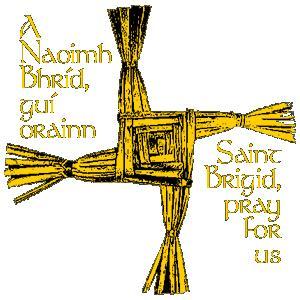 Corn dollies are frequently constructed in the shape of Brighids Cross, and although the symbol itself predates Christianity, it was given the name of the saint in order to ease the passage of acceptance of the new religion.
Corn dollies are frequently constructed in the shape of Brighids Cross, and although the symbol itself predates Christianity, it was given the name of the saint in order to ease the passage of acceptance of the new religion.
The symbol is reminiscent of the ancient Sun symbol, the swastika, its four arms pointing to the cardinal points of the compass. They also represent the Elements, with the point at the center indicating the fifth element of quintessence.
From: Encyclopedia of Secret Signs and Symbols
Corn Dolly
These days, the corn dolly generally gathers dust in gift shops, an innocuous souvenir for tourists in rural areas, particularly in the UK. However, its origins as a powerful magical symbol go back thousands of years to pre-Christian times. It may come as a surprise that the corn dolly hanging on the kitchen wall can trace its roots back to a particularly bloody ritual.
In any agrarian culture, the success of the crops is all-important and in Northern Europe the harvest produce was essential to survival during the winter period. It was the generally held belief that the spirit of the harvest – in this case, the versatile grain crop – resided in the plant, and once the plant was cut down then the spirit effectively became homeless.
In order to provide a new home for this spirit, the farmers made a corn dolly from the very last stalks of the crop. The dolly would spend her time indoors over the winter, waiting to be plowed back into the ground at the start of the new season.
In places where the corn dolly custom was not established, the last few stalks of corn were violently beaten into the ground, thus driving the spirit back into the earth.
In some districts corridors of standing corn were left from one field or plot to the next, so that the spirit would have a way of retreat till the last strip of corn was reached. The reapers would then line up before it and throw their sickles at it, so that the goddess would never know whose hand had cut the last stalks.
These were then gathered up reverently and woven into the image of the spirit or Corn Goddess, who thenceforth held a place of honor at the harvest home feast and then by the family hearth. On Plough Monday it was taken to the fields and interred in the first furrow of the new season, ready to work the necessary magic for the next harvest. “Dolly” may be a corruption of “idol” or may have come directly from the Greek word eidolon, which means apparition or that which represents something else.
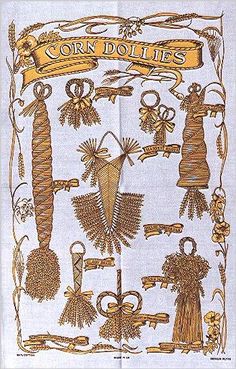 The dolly was made into a shape of an old woman, representing the Crone aspect of the Harvest Goddess. She was drenched in water as a further propitiation to the Gods and to ensure that plenty of rain would feed the harvest to come. Different areas had different styles of corn dollies.
The dolly was made into a shape of an old woman, representing the Crone aspect of the Harvest Goddess. She was drenched in water as a further propitiation to the Gods and to ensure that plenty of rain would feed the harvest to come. Different areas had different styles of corn dollies.
However, the custom of preserving the spirit of the harvest was not always carried out in such a genteel way. The Phrygians, who lived in central Asia Minor and worshiped the Mother of the Gods, Cybele, carried out a different sort of ceremony.
Their corn dolly was formed from thickly plaited sheaves of corn formed into a tall column. Any stranger found in the vicinity was captured in the belief that his presence there would mean that the spirit of the harvest had possessed his body and caused him to wander into the area. The hapless stranger was then trapped within this cage of corn and then beheaded in the belief that the blood that fell upon the ground contained the valuable “soul” of the crop.
From: The Element Encyclopedia of Secret Signs and Symbols

